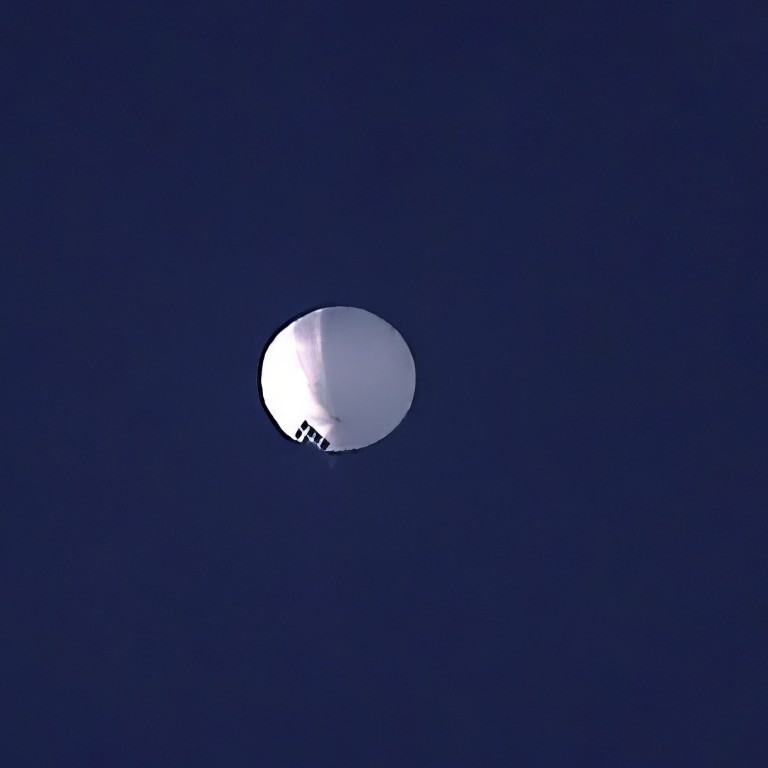
Chinese spy balloon claims: Beijing urges US to respond ‘calmly and prudently’
- Beijing has not issued an outright denial, saying it is ‘learning about the verification of the matter’ and had ‘no intention’ of violating US air space
- US officials say they do not believe the balloon is a serious intelligence threat and some analysts have speculated that it may not be used for spying
In response to a question about the Pentagon tracking the suspected Chinese spy balloon, foreign ministry spokeswoman Mao Ning did not issue an outright denial on Friday, saying Beijing was still “learning about the verification of the matter”.
“I want to emphasise that before the facts are clear, any speculation and hype are not conducive to the solution of the problem,” Mao said.
“China is a responsible country and has always abided by international law. We have no intention of violating the territory or airspace of any sovereign state.”
Pentagon officials said on Thursday that the US was tracking a suspected Chinese surveillance balloon that had been spotted over its airspace.
The air force had prepared fighter jets to shoot it down, but military leaders advised President Joe Biden against doing so because it risked killing or injuring people on the ground, according to Reuters.
A senior defence official, speaking on the condition of anonymity, told the news agency the US had “very high confidence” it was a Chinese high-altitude balloon and it was flying over sensitive sites to collect information.
One of the places the balloon was spotted was Montana, which is home to one of the nation’s three nuclear missile silo fields at Malmstrom Air Force Base.
The purpose of the trip is expected to be to keep bilateral tensions from leading to something “much more dangerous”, according to a US State Department spokesman.
Tensions here to stay as US pressures China ahead of Blinken trip: analysts
Reuters reported that the balloon had been tracked near the Aleutian Islands and Canada before entering the United States.
However, the Pentagon does not believe the balloon is a particularly serious intelligence threat.
“We assess that this balloon has limited additive value from an intelligence collection perspective,” a defence official told Associated Press.
Steve Ganyard, a former official with the US defence and state departments, told ABC that the object looked like a standard research balloon, which is unpowered and cannot be controlled after release.
He said that rather than being “nefariously deployed” by China, the balloon might have experienced mechanism failure and could not deflate.
Noting that Chinese satellites can collect information in a similar fashion, Ganyard told ABC that China intentionally flying a balloon over the US would be highly provocative and have little intelligence value.
The use of balloons for surveillance dates back decades but their effectiveness has always been limited. In the 1950s the US sent hundreds of balloons over communist countries, including the Soviet Union and China, to photograph secret infrastructure.
But despite launching more than 500, the Americans were only able to recover 54 and of those, only 31 provided useable information.
Pentagon spokesman Patrick Ryder said the balloon was travelling at an altitude well above commercial air traffic.
“It does not present a military or physical threat to people on the ground,” Ryder said.

Unlike satellites, which require space launches that cost hundreds of millions of dollars, balloons can be launched cheaply.
The balloons are not directly steered, but can be roughly guided to a target area by changing altitude to catch different wind currents, according to a 2005 study for the Air Force’s Airpower Research Institute.
Song Zhongping, a former People’s Liberation Army instructor, said the US should not assume the balloon belonged to China without investigating.
“China releasing balloons is completely reasonable and legaland does not infringe on American territory,” Song said.
Chinese rocket-balloon launch lifts near-space scientific ambitions
“The US should not view such common Chinese military activity through coloured lenses … Balloons have a lot of functions and surveillance is merely one of them. Weather forecasting, or monitoring the ionosphere is also done by high-altitude balloons.”
He also said for a balloon of this size to successfully enter US airspace and hover over important missile silo fields indicated a lapse in security.
“This shows that the US airspace defence system is only for show and is unreliable. For them to sensationalise this topic only exposes the flaws in their systems,” he said.
Additional reporting by Amber Wang

